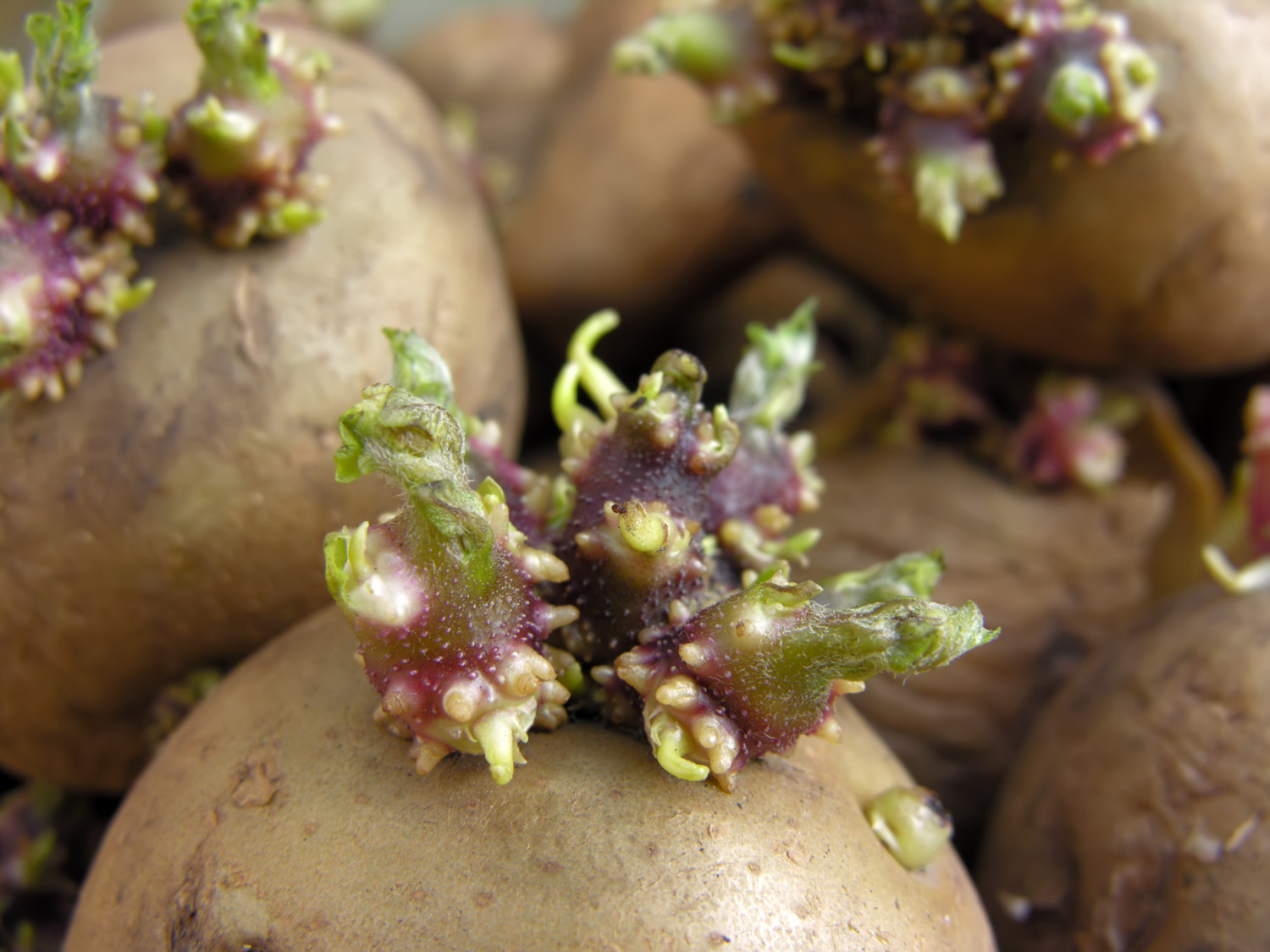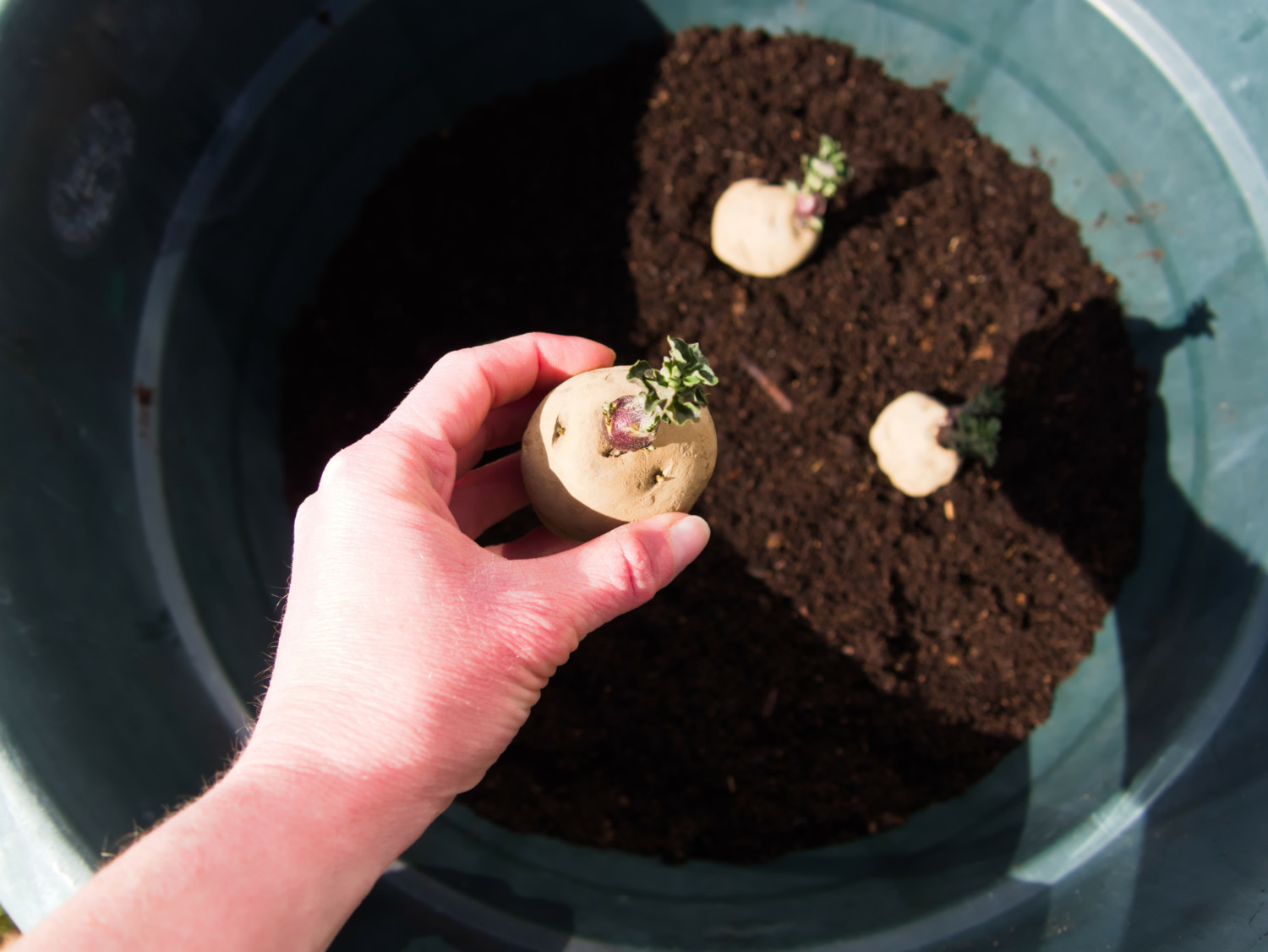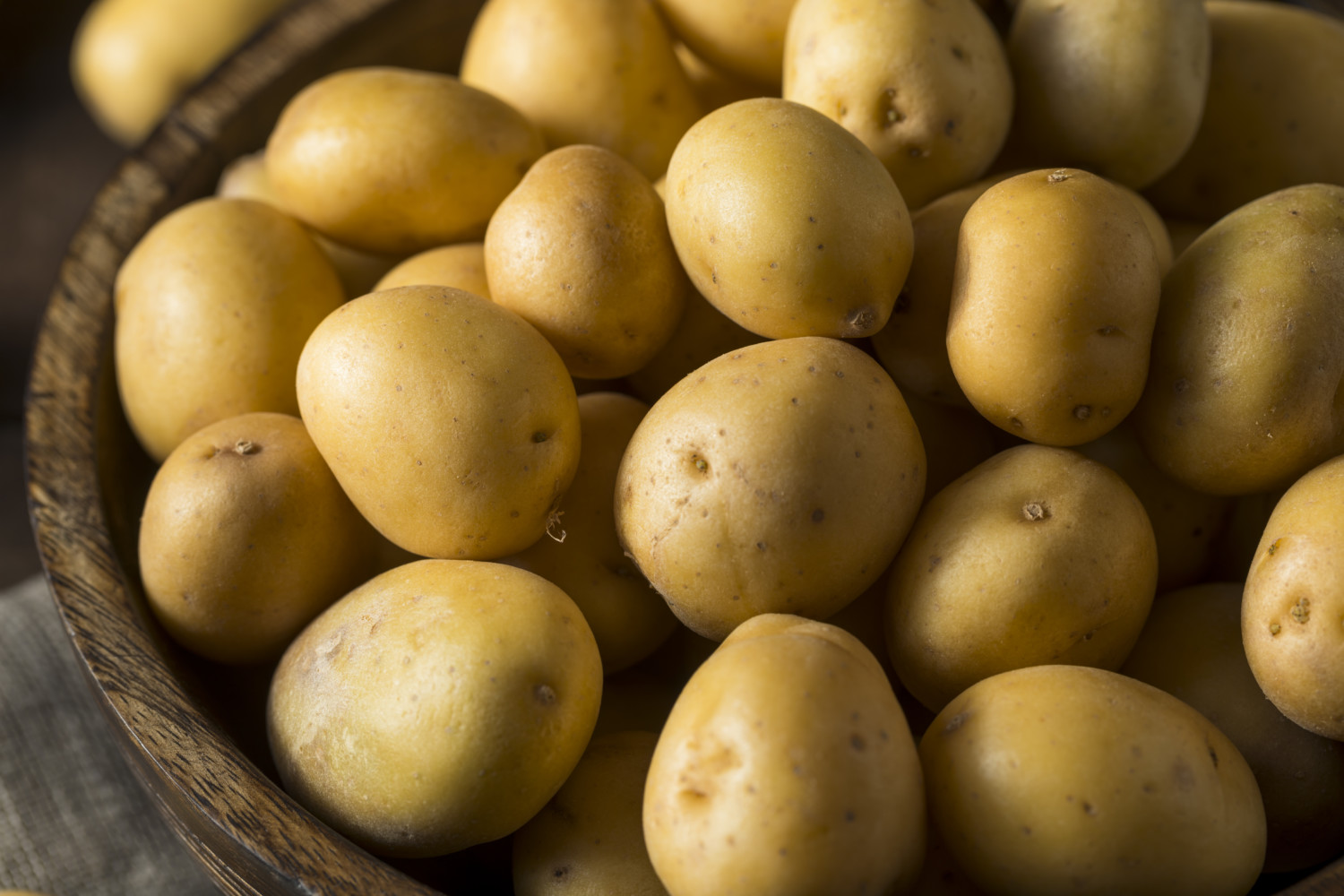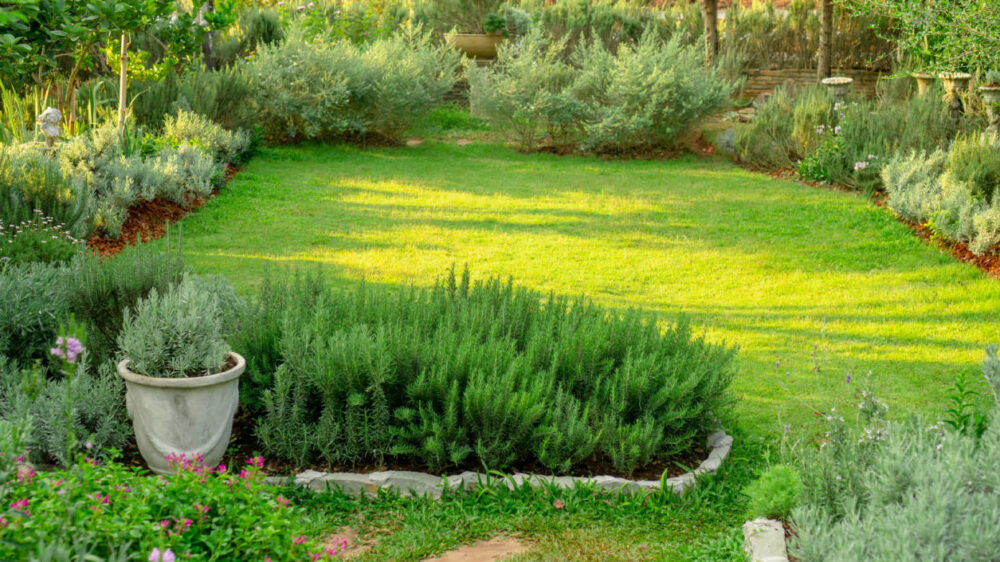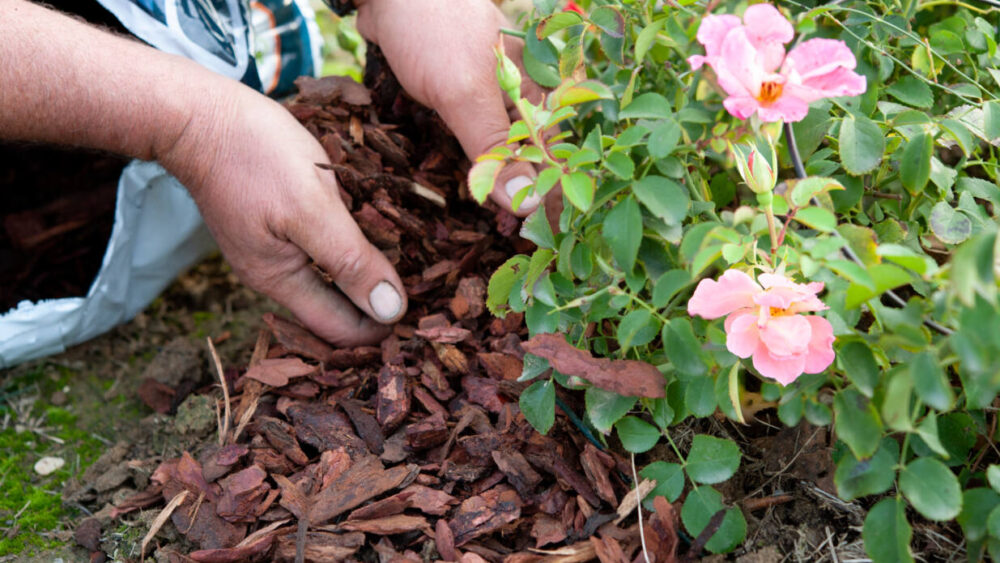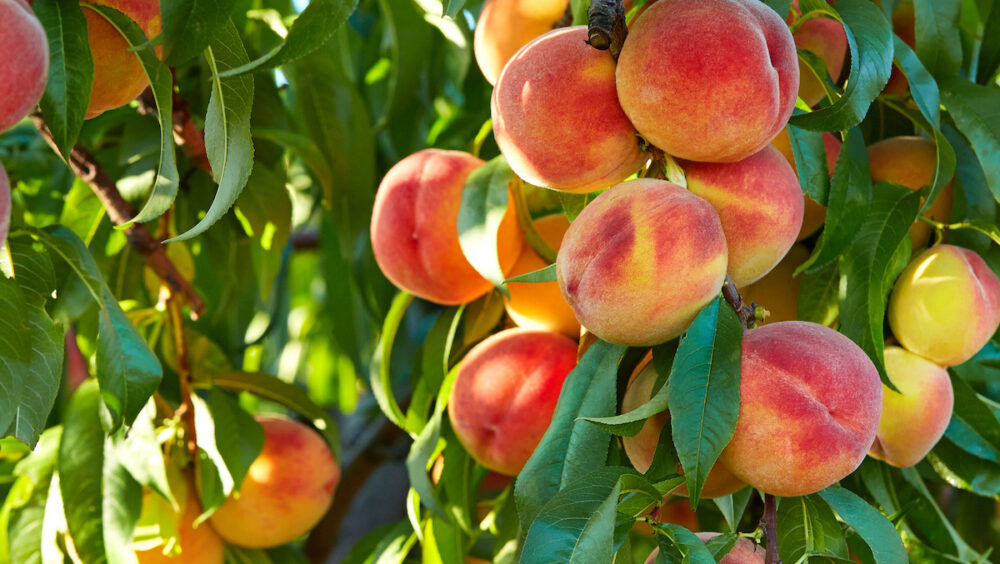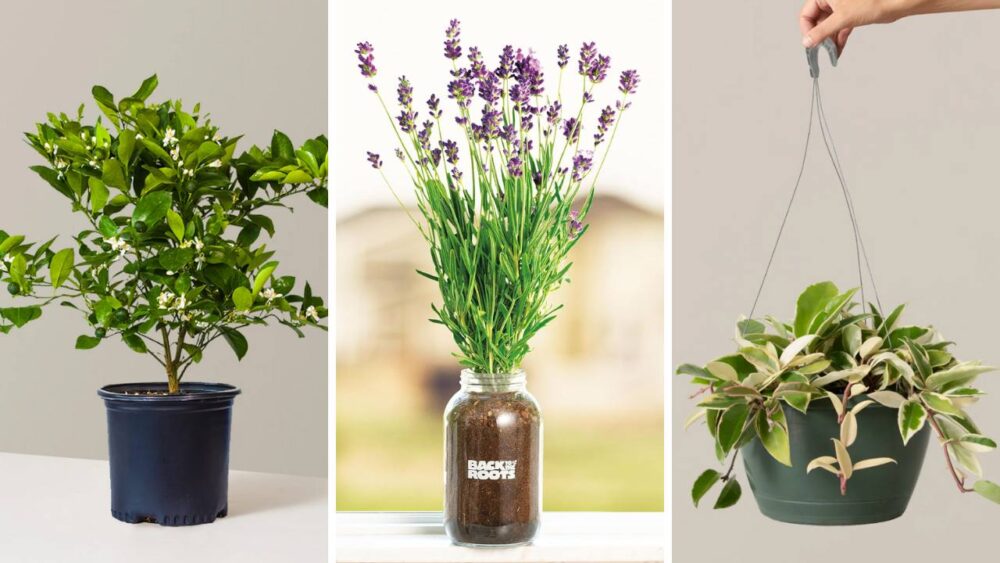How to grow potatoes in a pot
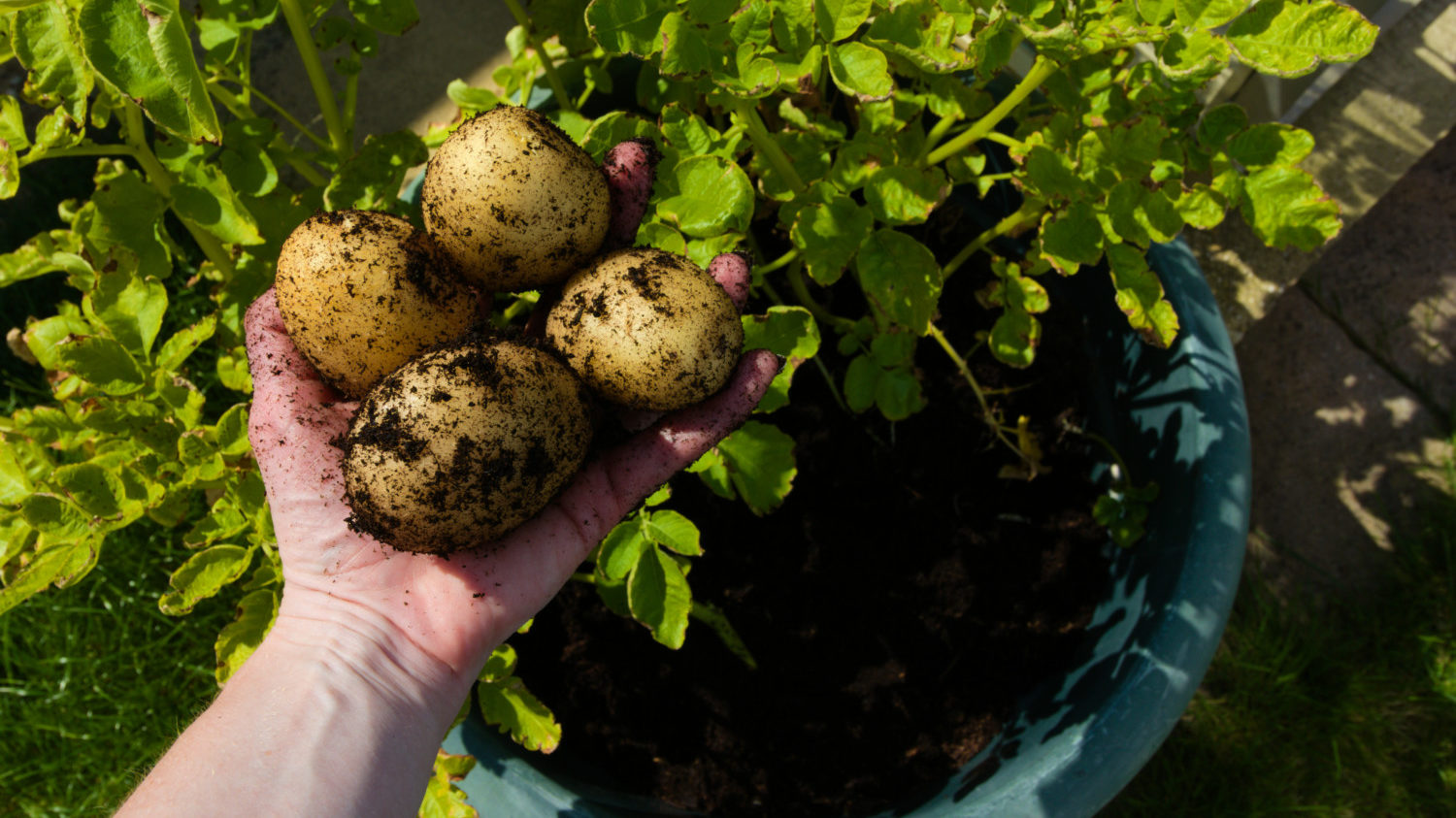
Potatoes are loaded with nutrients, such as vitamin C, vitamin B6 and potassium. They are rich in antioxidants, naturally gluten-free and extremely versatile. You can use them as a side for almost any dish or make them the star of the meal.
And if you’d like to have your own supply of the tubers, you can grow them yourself, even if you don’t have a big garden plot. When you know how to grow potatoes in a pot, spuds are one vegetable you can raise in almost any space; all you need is containers and a few other supplies.
What You’ll Need To Grow Potatoes In A Container
If you want to know how to grow potatoes in a pot successfully, you will need the following items before you begin:
- A large, deep pot with drainage
- Potting mix
- Compost
- Seed potatoes
- A spading fork or similar tool for digging
Since potatoes grow into the ground and not upward, choose 2- to 3-foot tall containers with a 10- to 15-gallon capacity. Anything larger than this can cause problems with watering and drainage, which could cause the potatoes to rot before they are even ready to harvest.
Garden soil can be an excellent choice to grow potatoes in a traditional garden. However, it is not always the best option for growing potatoes in a pot because it compacts easily and won’t drain well, can quickly dry out and could contain weeds or diseases that are difficult to treat in a container. If you use it, mix it with fertilizer and compost first.
Instead, consider using equal parts soilless potting mix and compost. Soilless growing mediums such as peat, perlite and vermiculite are lightweight and retain necessary moisture but drain better than soil in a container. High-quality compost will provide important nutrients the potatoes need to grow properly.
On Choosing Which Potatoes To Grow
Some home gardeners plant sprouted grocery store potatoes, while others prefer to purchase seed potatoes from a farm or garden retailer. If you already have sprouted spuds on hand, you can start with them. If not, you might have more success with seed potatoes as many grocery store-bought varieties are treated with a sprout inhibitor that can cause them not to grow. Seed potatoes are also tested for diseases and receive government-issued disease-free certification.
When choosing the type of potatoes you want to grow at home, consider how you plan to use them and how long you want to wait before reaping your spud harvest. You may also want to consider size and how long a potato variety can be stored once it’s harvested. Then, look at seed potato options to decide which suits you best.
For instance, firm, buttery Yukon Gold potatoes are excellent for baking and mashing. They are a hardy early variety ready in about 65 days. Starchy Russets, great for frying, are late-season potatoes needing 120 to 135 days to mature.
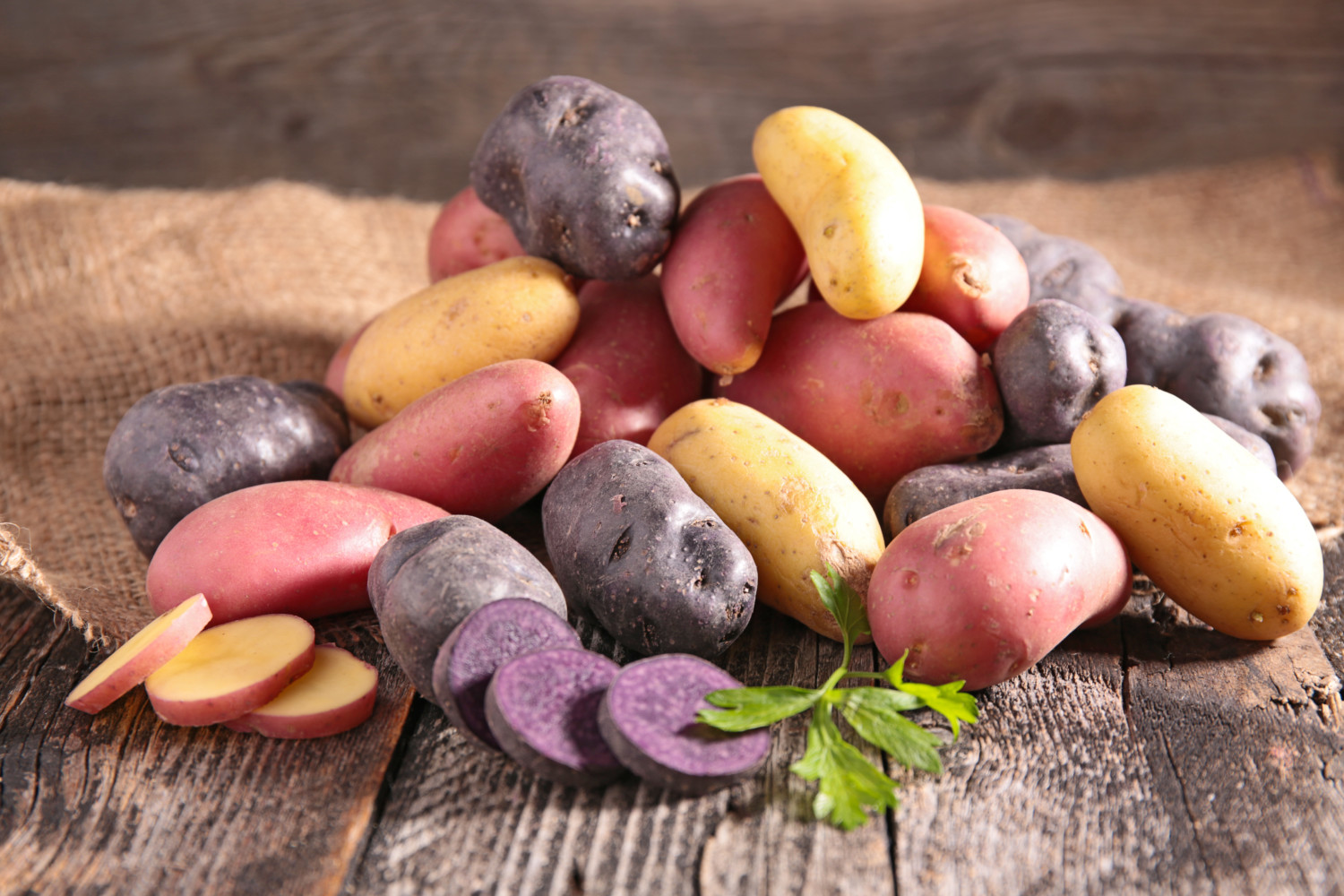
How To Grow Potatoes In A Pot
When you are ready to get planting, add six to eight inches of the soil or potting mixture you are using to the container. If your seed potatoes are small, you can plant them whole. Cut large seed potatoes into chunks with at least one eye or dormant bud each.
Larger seed pieces will produce many small to medium potatoes, while smaller ones will produce larger potatoes that are fewer in number. However, pieces that are too small may not grow properly. Blocky pieces weighing about 1-1/2 to 2 ounces are a safe bet.
Place the seed potatoes on the soil with the buds facing up. Give them breathing room. Although the number of potatoes you plant will depend upon your container size, planning for five gallons of soil volume per plant will promote maximum health and productivity. So, for a 15-gallon pot, you would plant three seed potatoes.
Cover the potatoes with another six inches of soil or potting mix. As the potato plants begin to grow, add more soil or potting mix to the container. Leave about six inches of foliage exposed at the top of the container each time.
Tips for the Best Home-Grown Potatoes
- Even growing in a pot, potatoes need lots of sunlight and ample water. Place the container in a location that receives six to eight hours of direct sunlight every day.
- Test the soil daily by poking a finger one or two inches into the soil to ensure the plants are getting enough water. If the soil feels dry, give your plants a nice drink. You know you have watered them enough when a bit of the liquid seeps out of the drainage holes.
- When shoots begin to emerge, feed the potatoes with a fertilizer with a higher amount of phosphorus (the middle number) than nitrogen (the first number) every couple of weeks.
- “Hill” your potato plants a few times, after six inches of growth. Add a few inches of prepared soil around the plants, covering the stems at the bottom. Make sure about one-third of your plant is buried.
Adobe
Harvesting Potatoes Grown In Containers
Although different potato varieties have a range of growing periods, the best way to know when your potatoes are ready is to check the foliage. When the plants flower, begin to turn yellow and die back, your potatoes should be ready to harvest.
You can dig up fresh potatoes to eat right away as soon as the foliage yellows. However, if you don’t intend to use them right away, you can leave the potatoes in the pot for two to three weeks after the flowers die back. Dig up your spuds carefully with a spading fork or similar tool. Allow them to dry and cure for a few hours, then brush away loose soil. Store the fresh potatoes in a cool, dry place. And enjoy!


